Death Valley
Death Valley in Kamchatka is a mysterious place that attracts many tourists. After all, everything unexplainable gives free rein to fantasies and reflections.

The only geyser field in Eurasia, which is also among the largest geyser fields in the world.
About KamchatkaIf you haven`t found a suitable tour in the general catalog, please send us your preferences and parameters for your future trip— dates, number of people. Our manager will be sure to make you a good offer.
Anastasia

The Valley of Geysers was found in 1941 and is one of the most prominent geographic discoveries in the 20th of century which was committed by members of Kronotsky Nature Reserve, by a geomorphologist, Tatyana Ustinova and an inspector, Anisifor Krupnenin.
This event can be named as a fortunate, because initially a goal of hike itinerary involved the territory exploration was only to find the sources of the Tikhaya and Shumnaya rivers. The task was committed and it was found that the Tikhaya river is not a source of the river flowing out of the caldera of the Uzon volcano. There is a deep gorge located between Kikhpinych volcano and neighboring mountain range and from which powerful going out of hydrogen sulfide. Exploring the Shumnaya river, Tatyana Ustinova and her assistants unfold a large waterfall and thermal glade on the opposite side of the river. The first discovered geyser located a few meters away from this spot, and represented itself unexpectedly, streaming out a large spout of hot boiling water from the opposite side of the river. It was named as Pervenets (Firstborn).
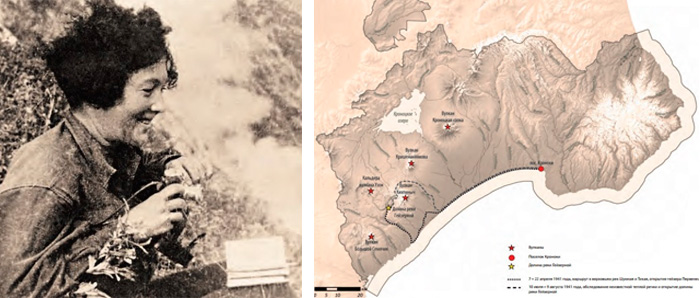
Further exploration continued in the summer of that year. A lot of hot springs was discovered and explored. A telegram to Moscow was sent about this surprising discover of those years. However, Tatyana’s work was terminated due to military situation and because of lack of money for further exploration. Later, Tatyana Ustinova visited the valley of geysers again in 1944 and in 1979.
The Valley of Geysers located in the most eastern part of Russia and it takes a second place after geyser field in the USA. However, comparing with other fields this object in Kamchatka is the most compacted, because the territory with length of 4 kilometers has more than 50 thermal spring and 40 geysers.
Increasing of human impact on nature and especially construction of geothermal power plants is resulting in irretrievable losses of these unique nature sights. Evidence of this fact is a loss of all the geysers on the territory of Iceland and common quantity of geysers locating beyond of Yellowstone Park in the USA.
Geyser periodically erupts their depth in the gushing form is unique natural phenomena in its kind, because thermodynamic conditions which are necessary for this kind of activity are relatively rare. There are only 5 enough large geyser areas all over the world. They locate in the USA, New Zealand, Iceland, Chile and Russia.
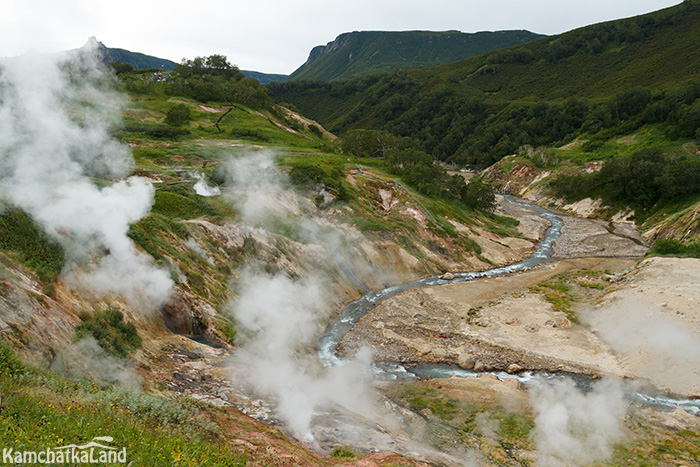
The riverbed of the Geysernaya river is enough straight from the place of the upper reaches in the west direction and its gorge has wide of about 200-300 meters. The gorge walls have height from 100 to 500 meters above water level. Further the river changes its direction to south-west and the gorge of the valley gradually broadens to wide of 800 meters and it has depths to 250 meters.
Relief changes after confluence of two rivers: the Pravaya (Right) and Levaya (Left) Geysernaya rivers. The riverbed heads to the south and extends for 2,5 kilometers. Levaya and Pravaya river banks become steeper. The depth of gorge, running into the mountain plateau, reaches 400 meters. The Verkhne-Geysernoye thermal field locates there.
Changing its direction after thermal field the area expands to 1,5 kilometers. There we will see Troynoy waterfall, as well as Verkhny (Upper) geysers in the riverbed. The Valley of Geysers starts there.
Maximum depth of the Geysernaya river is at the place lower than Goryachaya river, near the Geysernoy lake which is one of the most southern sights located on the territory of the protected area. The last 2,5 kilometers of the Geysernaya river is the concretion of geysers and other thermal springs.
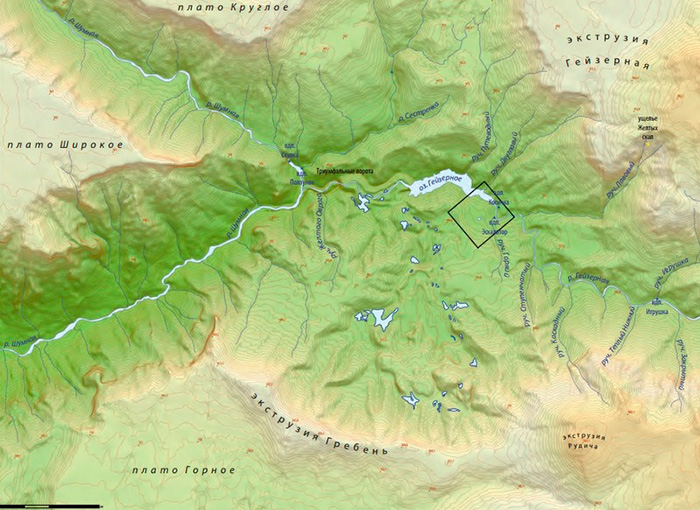
The Valley of Geysers has numerous surface thermal manifestations which are connected to the Geyser hydrothermal system. Hydrothermal system presents the place of concentration of high-temperature underground water, which is located in defined geological structure and heated by thermal stream flowing from magma chamber lied closer to the water. The feature of high-temperature water is its boiling at different levels of flows. Thus, it creates hot springs on the surface, as well as hot mud pots, stream vents and geysers.
The collapse of the southeastern side of Uzon-Geysernoy depression happened about 9-12 thousand years ago and it was a result of pressure lowing and its discharge. The last of 5-6 thousand year discharge was 400-500m, and it can be a possible reason of geyser system in the valley. Such different thermal outputs were cause by the fact that the Geysernaya river, cutting the rock mass, opens the upper part of the system and creates the conditions for drainage.
Amount of common discharge of the system reaches 250 hp.
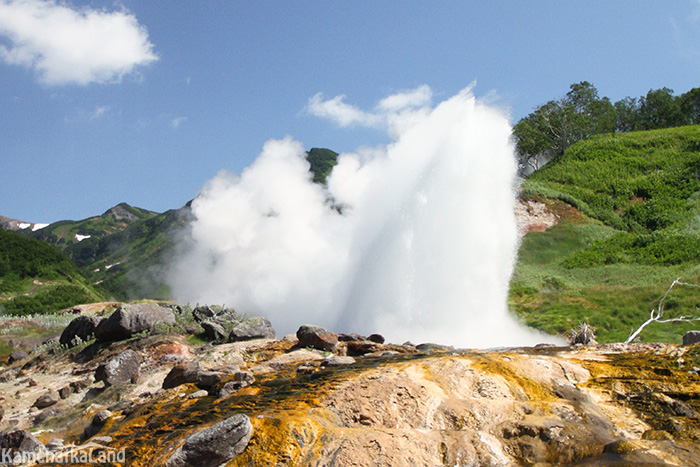
The river valley includes 2 thermal fields: Verkne-Geysernoye and Geysernoye.
The first one locates at the left bank on the middle course of the river and it has a length of 1,5 kilometers. There are no boiling mud pots or hot springs, but you can observe numerous stream outputs and heated soil.
The second thermal field is Geysernoye. It begins from the place where the Geysernoy river flowing in the Shumnaya river and it stretches for 4 kilometers for both banks of the river. This territory is accumulation of different manifestation of thermal regime, ranging from pulsating springs to large geysers.
As a rule, tourists visit only the central part of thermal field where there are the main geysers and safety paved paths.
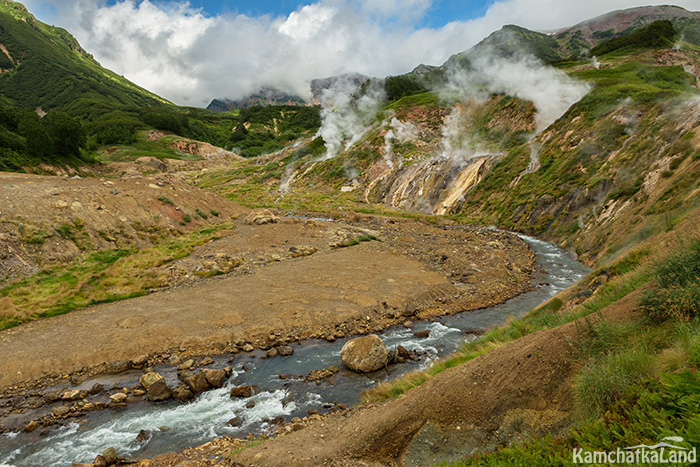
Kronotsky Nature Reserve is the place where constant changes of elements happen. Upper impact is exerted on the territory of Nature Reserve and the Valley of Geysers by living organisms and independent factors of environment, but below, warmth of subsurface areas also exerts a large impact, especially, on the limited territories. Intensive ash falls make current soil cover more diverse.
Soils have, in their way, rare thermal regime, thanks to it they do not freeze and transformation of solid substance lasts for a whole year. In comparison with volcano, termozem has loamy composition and there are soils with different colors from yellow-red to white and ochry in its interburden. Salt with warmth goes out from the ground, so that it creates new formation not like the local landscape.
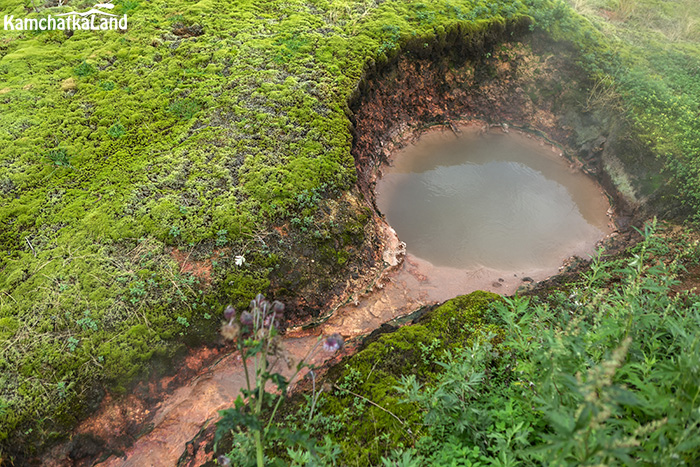
The valley of geysers is surrounded by diverse vegetation. There are mountain and tundra areas. Alder elfins covering mountain slopes and surface of watershed takes up a dominant position. Also, you will be able to see a group of birch vegetation. Erosive slopes of the valley, rocky areas and riverbed of watercourses are almost deprived of it.
Places of thermal outlets presents by thermophilic fauna communities. Depending on the concrete location of vegetation community differs with sizes, configuration and contents.
Ecological factors, investigated on the territory of the Valley of Geysers impacts on some classification of fauna. Sergey Lipshiz and Hans Trass defined three classifications of this vegetation of this place:
1 - vegetation, which locates only on the territory of thermal activity
2 - vegetation, which locates on the heat areas
3 - vegetation, locates as on the areas with thermal conditions, as on the areas without it.
Some scientists think that manifestation of thermal activity forwards natural formation of new species of vegetation. Distribution of such species of vegetation in the surrounding of hot springs is microbelt character. The first definition of such character was given by Hans Trass in 1963.
Some species of flora are a part of rare and vulnerable species, due to this reason they are listed in Red book of different level, such as from regional to international one.
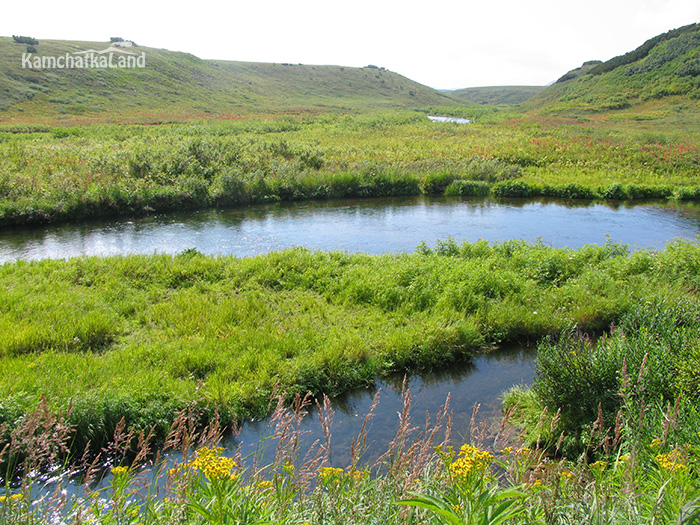
The territory of Kronotsky Nature Reserve includes 58 rare species of fauna, 15 of these ones are in the valley of the Geysernaya river. 4 species of vegetation are listed in Red Book of Russia, juncus articulates is international importance, and another 10 species locates on the way of excursion route in the Valley of Geysers.
Among thermal springs you will see Erman’s birch which is a famous species there. Its age is about 300 years old. There was the field camp of discoverers of the Valley of Geysers near this tree in spring 1941. In 2011 this tree was awarded the status “Nature monument”.
Среди термальных источников Вам встретится знаменитая в здешних местах береза Эрмана. Её возраст составляет около 300 лет. Весной 1941 года около этого одинокого дерева располагался полевой лагерь первооткрывателей Долины Гейзеров. В 2011 году отдельно этому знаменитому дереву был присвоен статус - "Памятник живой природы".
Depending on location of vegetation along the territory of thermal activity changes not only its composition, but quantitative specification of coens.
Thermal areas play an important role for survival of some animal species. A whole complex of insects living there for a year was formed there and due to temperature conditions it reaches high number. Birds use thermal warmth for growing their brood and for feeding. There is a distribution of animals in certain seasons which is due to the vegetation of plants, as well as the lack of forage in other regions of the peninsula.
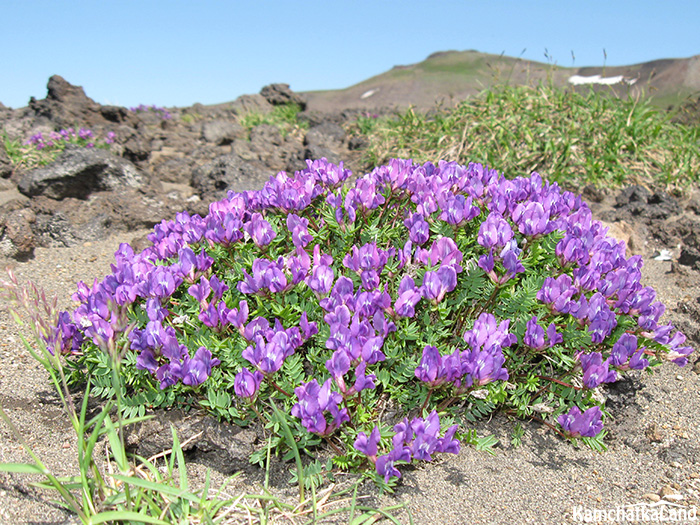
This place is diverse with not only manifestation of different ecosystem, but with climate as well. Thus, height differences and numerous thermal manifestations create all possible climatic conditions on its territory.
The Valley of Geysers locates 40 kilometers away from the Pacific Ocean and the height varies from 600 to 1400 meters above sea level. Rainfall amounts reach about 2 000 mm per year and which is the fundamental factor of formation of snowfield with a height of several meters.
In the valley winter is mild and there is no strong frost. Winter lasts about 180 days. In the beginning of November the first permanent snow covers is territory and snow melt only closer to the end of June. In snowy winter the height of snow cover can reach 6 meters. Temperature of the Geysernaya river is 24-28 С.
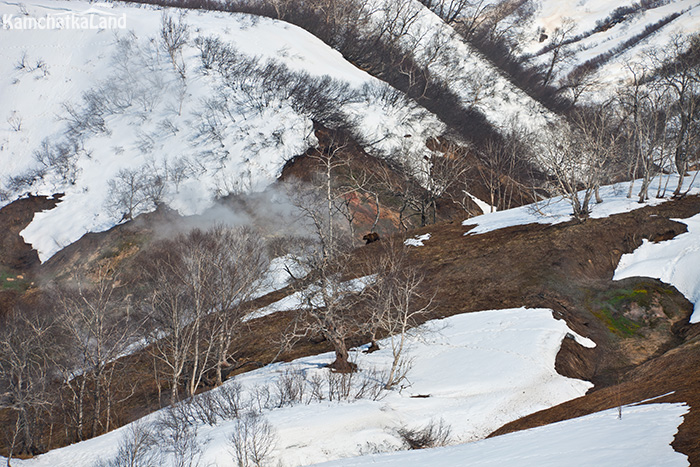
Spring is much shorter there and lasts from 56 to 77 days a year. The first thawed patches occur there only in May. Temperature of the Geysernaya river water falls to 16-18С because of spring flood and snow melting.
Summer there like on the entire Kamchatka peninsula passes quickly for 60-90 days and it is enough chilly. The Valley of Geysers is often surrounded by fog. However, when weather is clear, wonderful ecosystem of the valley opens before you in full.
When autumn comes, the valley is covered with bright paints. Average daily temperatures become lower at the same time when snow falls. The first cyclones come. Precipitation grows. As a rule, autumn is dry and short. Change to winter time happens sharply.
Nature complex with name of the Valley of Geysers is a system which is under permanent motion. The reason is geological position, features of hydrothermal load, relief of slopes, numerous fissures, as well as distortion of surface. These changes happen permanently, and some of them are unexpectedness for scientists.
For the last 25 years the Valley of Geysers on Kamchatka went through 3 global transformations.
Typhoon Elsa brought an unprecedented amount of rainfall on the 4th of October, 1987, and was a cause of water rise in the Geysernaya river for 3 meters. Passing flow of mud and boulders washed away many springs and destroyed existence of a geyser such as Bolshaya pechka.
June 3, 2007 was marked by a large landslide, formed as a result of the collapse of the slopes at the head of the Vodopadny river. The large blocks of rock were broken, so the landslide had mudstone flow. Landslide of 2007 stretched for 1,7 kilometers and width from 200 to 400 meters. This landslide is the largest which was recorded in Russia. The result of this event was entire reformation of central part of the valley. After a few years Geysernaye lake was formed there, but the 21st geyser was lost irretrievable.
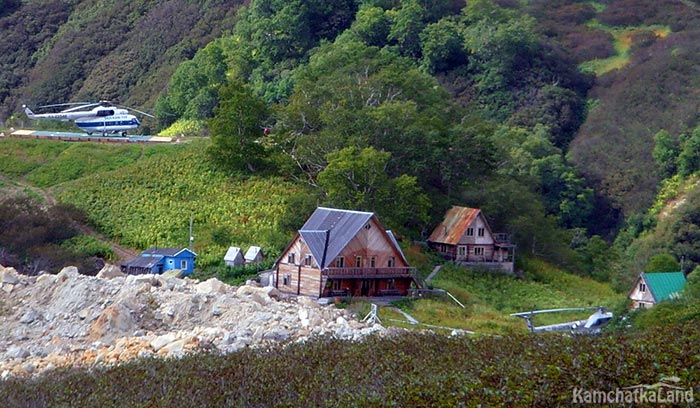
New landslide descended on the 4th of January, 2014. The reason was a collapse of the edge with lava flow on Zheltaya volcano. Size changes of Geysernoy lake and change of regime of a lot of geysers happened. A lot of geysers was covered with landslide flow passing the territory of the valley at great speed. The main scenic geyser ensemble "Vitrazh" was higher than flow, and his springs were not touched.
The valley of geysers, as well as the entire area of the river is an open laboratory, unique system attracting specialists from different spheres every year. Research includes field of knowledge, such as fauna and flora, influence of anthropogenic factors on the nature of the area and in recent years, reveal the value of this sight to people and providing ecosystem services to humanity. For investigating the mandatory condition is non-interference into natural processes, in connection with that fact scientists use modern technological equipment.
Since the beginning of 1990 the Geysernaya river and the Valley of Geysers became open for a visit. There is an excursion route. Every year more than 3500 tourists visit this place, and every year this number increase As a rule, the excursion route along the valley lasts about 1,5 hours and on your way you will see the consequences of landslide in 2007, Geysernoye lake, geyser complex “Vitrazh” and erupting geysers Fontan, Dvoynoy, Nepostoyanny, Aver’evsky, Bolshoy, Velikan, Vrata Ada, water pots Golyboy and Krugly and many other springs. The route is available all year round and you will be accompanied by a qualified guide of nature park and an inspector of safety administration. All the sights visiting along the way of the tour are equipped with flooring trails and viewing platforms. Travelers can visit the visit- center.

Volunteering in the nature park is always welcome. People provides services for no gaining financial or social benefits and performs different kind of work, such as research or providing excursion services.
Information about discovery of the Valley of Geysers spread around the world, attracting travelers’ and scientists' attention. During the period from 1961 to 1967 Nature Park was closed and All-Union tourist route № 264 was opened on its territory in 1963. As well, in 1966 the base for travelers and camps were built. The total length of the route is about 160 kilometers. For 10 years 15 000 travelers passed this path.
In the first years it was noticed a strong change in the natural ensemble of the valley. Scientists began to understand all the scales of negative recreational impact. In 1977 the route became unavailable, because its functioning was a serious threat to natural complex. However, it did not prevent curious travelers to visit it. Later it became obvious that the forbidden measures did not help and it is necessary to find a compromise not only to eliminate the causes of degradation, but also to preserve this territory.
Since the late of the 1980s Valley of Geysers became opened for travelers again. However, this history served to solve many questions about the modern nature management of the sanctuary. Soil and vegetation cover were very vulnerable to the impacts exerted by tourists and it was decided to minimize the impact by building a flat path along the excursion route. Another important factor of recreational impact is the anxiety of local animals which left their places during All-Russian route №264. Thus, every year there is “month of silence” arranging in the sanctuary in order to eliminate noisy impact on animal life in the territory of the sanctuary.
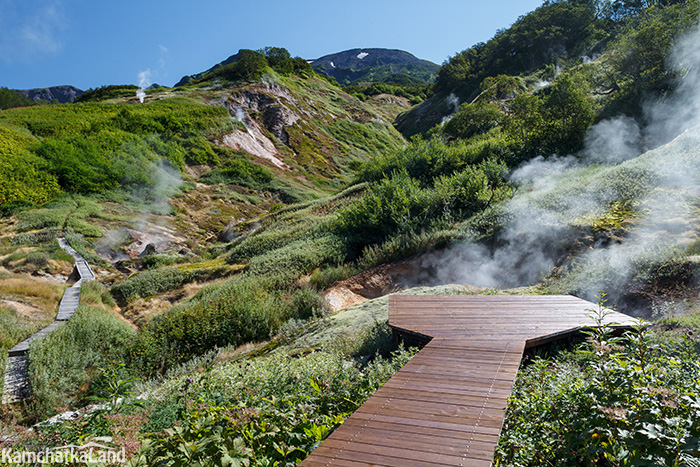
A famous film Sannikov Land came out in 1973. This story is about search of mysterious island located behind polar circle where there is a microclimate and gold deposit in accordance with scientists’ hypothesis. In the plot characters succeeded in finding this secret place. Interesting fact is that shooting of film Sannikov land was in the valley of geysers in Kronotsky Nature Reserve. Those who did not watch this film, we recommend to watch.

To book a tour or get advice about travelling to Kamchatka, write to us through this form. Manager Anastasia will reply to your enquiry shortly.
Анастасия

To book a tour or get advice about traveling to Kamchatka, write us through this form. Our manager Anastasia will reply to your request shortly.
Anastasia

To book a tour or get advice about traveling to Kamchatka, write us through this form. Our manager will reply to your request shortly.
Igor

The request was successfully completed, instructions are sent to your email